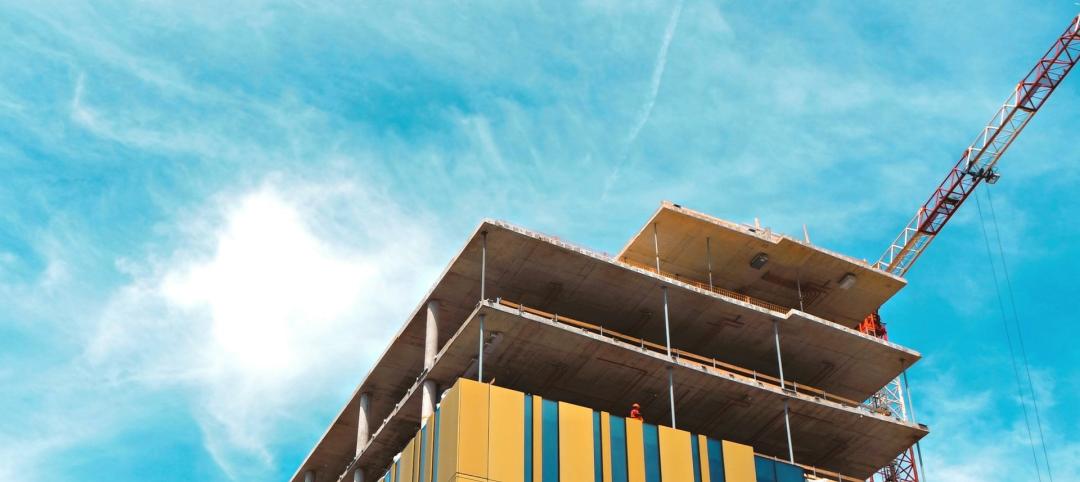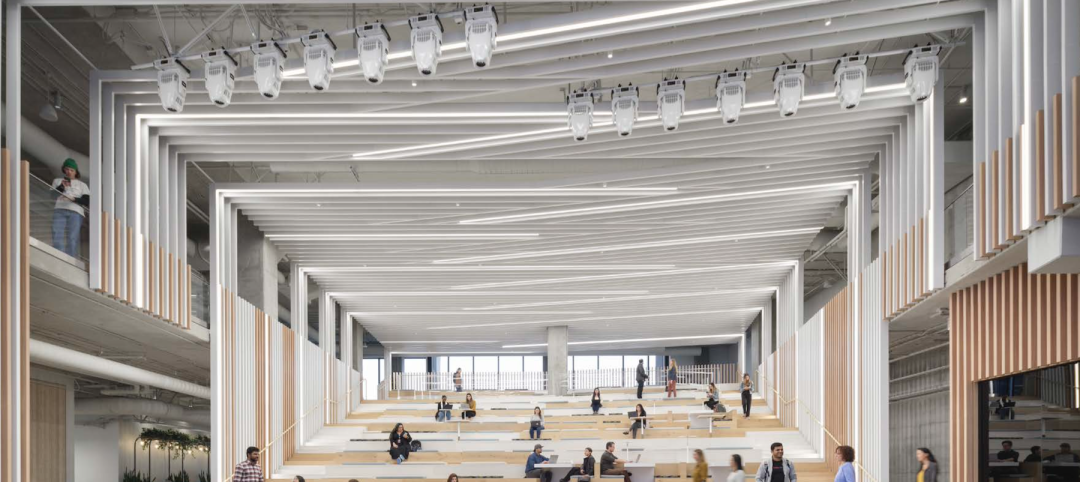Following the American Institute of Architects (AIA) announcement of the approval of a landmark resolution to engage the architectural profession in fighting climate change, a new report reveals why architects and engineers will need to redouble their efforts to reach 2030 Commitment goals.
“The findings of this new report underscore why it is imperative that the AIA make climate change a number one priority,” said AIA EVP/Chief Executive Officer Robert Ivy, FAIA. “Architects are uniquely positioned to have a significant impact on climate action. AIA is committed to rallying the profession so that together we can make progress towards our net-zero carbon goals by 2030. It’s critical that the architecture, engineering and construction industries come together to take action on this issue today.”
The report—2030 by the Numbers: The 2018 Summary of the AIA 2030 Commitment—amalgamates predicted energy use data in buildings from the 252 firms participating in the 2030 Commitment. Data from the latest report shows participating architects, engineers and owners are making progress to reduce the carbon footprint of buildings but are falling short of program targets.
In 2018, firms were targeting a 70% reduction in predicted energy use from the original baseline. Data from the new report shows that only a 46% reduction has been achieved.
Despite this shortfall, the report also points to progress. The data shows that the projects from the 252 participating firms would reduce $3.3 billion in operating costs and eliminate 17.7 million metric tons of CO2 emissions, which is equivalent to removing 3.7 million passenger vehicles from the road for a year.
AIA and its members are working to improve these results in an effort to meet 2030 Commitment targets. Last week, the AIA announced a landmark initiative to define immediate and long-term efforts to engage the architectural profession in climate action. Currently, the Institute is establishing goals to support mitigation and adaptation using the tenets of the comprehensive and holistic COTE Top Ten framework, now known as the AIA Framework for Design Excellence. Initially, AIA will focus its efforts on designing for energy, economy, and equitable communities. Additionally, the Institute will continue to encourage participation in the AIA’s 2030 Commitment and will work to develop new programs and resources that will support architects in fighting climate change.
Complete details of the report and information on AIA’s 2030 Commitment program can be found on AIA’s website.
Related Stories
Industry Research | Jan 31, 2024
ASID identifies 11 design trends coming in 2024
The Trends Outlook Report by the American Society of Interior Designers (ASID) is the first of a three-part outlook series on interior design. This design trends report demonstrates the importance of connection and authenticity.
Apartments | Jan 26, 2024
New apartment supply: Top 5 metros delivering in 2024
Nationally, the total new apartment supply amounts to around 1.4 million units—well exceeding the apartment development historical average of 980,000 units.
Self-Storage Facilities | Jan 25, 2024
One-quarter of self-storage renters are Millennials
Interest in self-storage has increased in over 75% of the top metros according to the latest StorageCafe survey of self-storage preferences. Today, Millennials make up 25% of all self-storage renters.
Industry Research | Jan 23, 2024
Leading economists forecast 4% growth in construction spending for nonresidential buildings in 2024
Spending on nonresidential buildings will see a modest 4% increase in 2024, after increasing by more than 20% last year according to The American Institute of Architects’ latest Consensus Construction Forecast. The pace will slow to just over 1% growth in 2025, a marked difference from the strong performance in 2023.
Construction Costs | Jan 22, 2024
Construction material prices continue to normalize despite ongoing challenges
Gordian’s most recent Quarterly Construction Cost Insights Report for Q4 2023 describes an industry still attempting to recover from the impact of COVID. This was complicated by inflation, weather, and geopolitical factors that resulted in widespread pricing adjustments throughout the construction materials industries.
Hotel Facilities | Jan 22, 2024
U.S. hotel construction is booming, with a record-high 5,964 projects in the pipeline
The hotel construction pipeline hit record project counts at Q4, with the addition of 260 projects and 21,287 rooms over last quarter, according to Lodging Econometrics.
Multifamily Housing | Jan 15, 2024
Multifamily rent growth rate unchanged at 0.3%
The National Multifamily Report by Yardi Matrix highlights the highs and lows of the multifamily market in 2023. Despite strong demand, rent growth remained unchanged at 0.3 percent.
Self-Storage Facilities | Jan 5, 2024
The state of self-storage in early 2024
As the housing market cools down, storage facilities suffer from lower occupancy and falling rates, according to the December 2023 Yardi Matrix National Self Storage Report.
Designers | Dec 25, 2023
Redefining the workplace is a central theme in Gensler’s latest Design Report
The firm identifies eight mega trends that mostly stress human connections.
Contractors | Dec 12, 2023
The average U.S. contractor has 8.5 months worth of construction work in the pipeline, as of November 2023
Associated Builders and Contractors reported today that its Construction Backlog Indicator inched up to 8.5 months in November from 8.4 months in October, according to an ABC member survey conducted Nov. 20 to Dec. 4. The reading is down 0.7 months from November 2022.

















